A pressure reducing valve holds a consistent set point downstream of the valve. For reducing pressure in high pressure application, you can use a High Pressure Pressure Reducing Package.
These packages can be set up with either a Diaphragm Controlled High Pressure Pilot or a Bellows Controlled High Pressure Pilot depending on your site conditions.
How a Diaphragm Controlled Pressure Reducing Package Works
- Beginning with the control valve in a closed position and the adjusting screw not yet calibrated to a desired set point, the upstream pressure begins to flow—in this example, up to a pressure of 400 PSI. No supply pressure is available yet to move the valve open.
- Upstream pressure flows into the Drip Pot, which knocks out liquid from the supply gas which could be detrimental to other instruments.

- The supply gas regulator reduces the upstream pressure to 30 PSI to provide supply pressure to the pilot after passing through a filter.
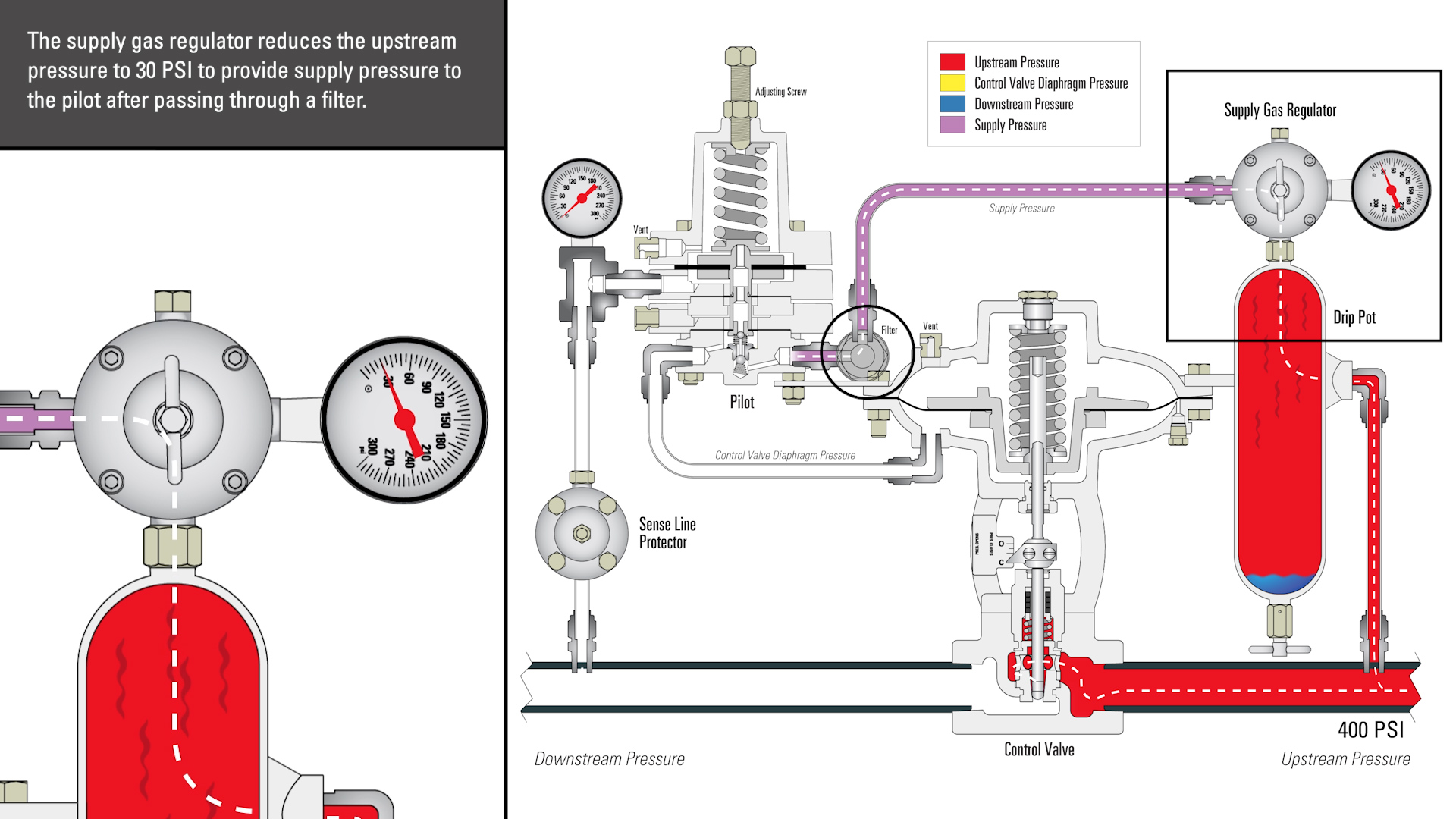
- This supply pressure moves into the pilot, where the flow is met and blocked by the pilot plug.
- When the adjustment screw is unthreaded, there is no downward pressure on the pilot diaphragm assembly. Once the adjusting screw is threaded farther into the bonnet, the spring puts pressure on the assembly, which positions the pilot plug to open the flow of supply pressure into the control valve actuator.
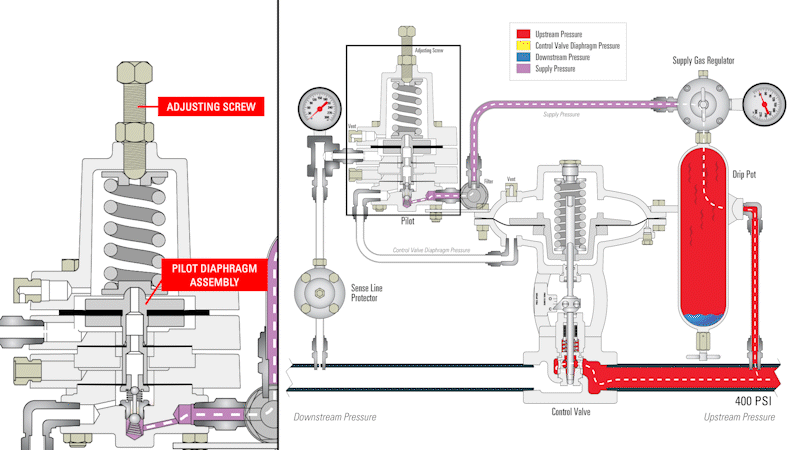
- This supply pressure pushes up on the control valve diaphragm working against the tension of the spring. This opens the valve and allows upstream pressure to move downstream.

- Next, downstream gas moves through the sense line protector. This device blocks pressure to the pilot when it exceeds the working pressure of that pilot.
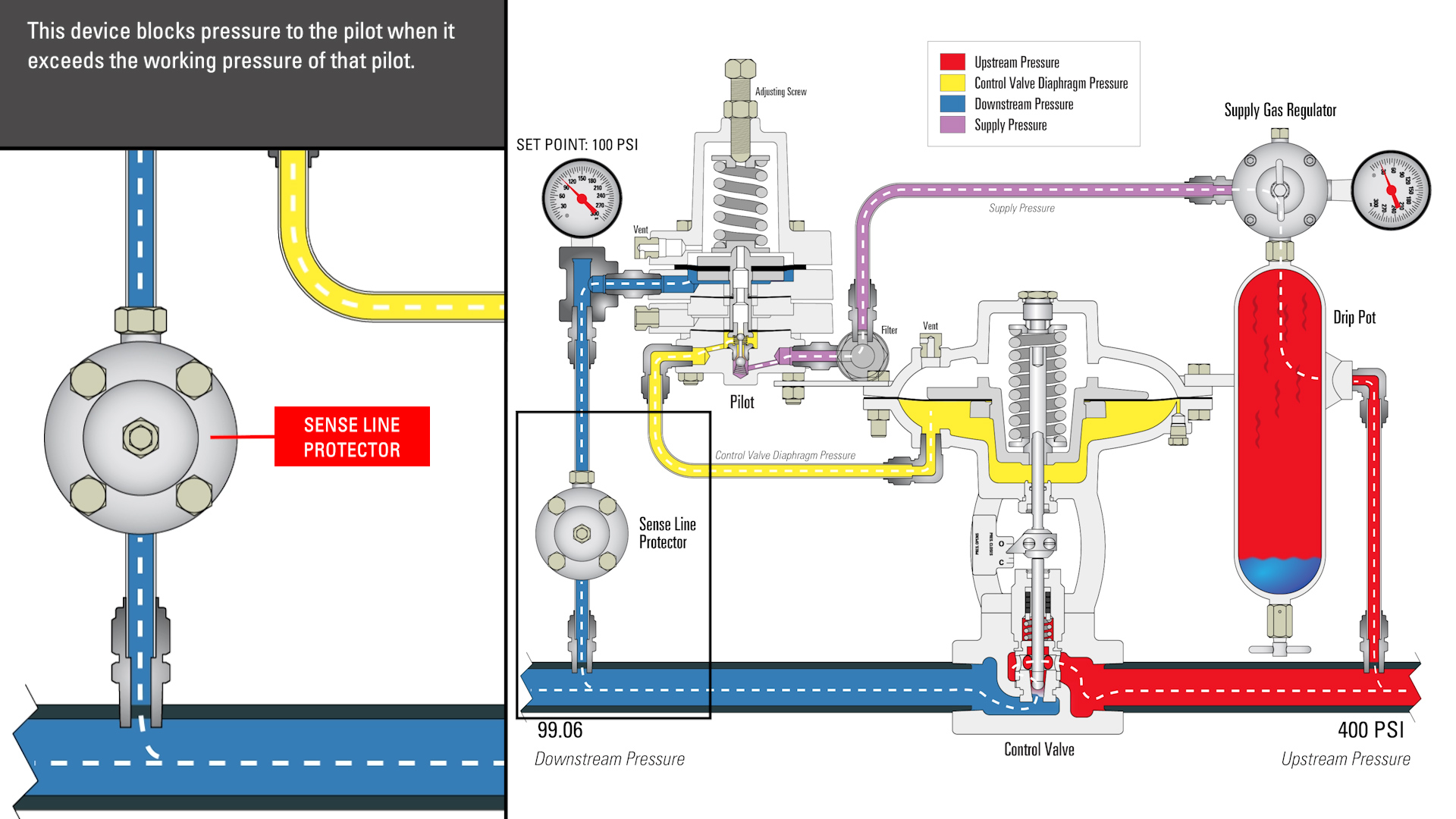
- The downstream pressure in the pilot tells the valve what to do next. With the set point at 100 PSI, this pilot will keep the valve open until 100 PSI is reached.
- As the pressure approaches the set point, there is enough force pushing up the pilot diaphragm assembly to move it up and reposition the pilot plug.
- Now, supply pressure is blocked from going into the control valve actuator, and instead the diaphragm pressure is rerouted out through the pilot and vented.
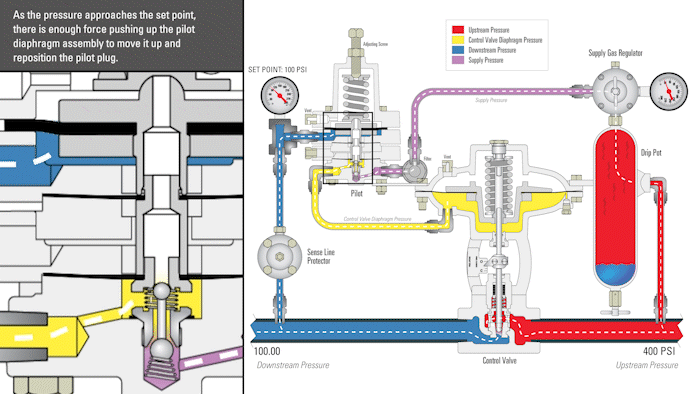
- This allows the control valve to travel to its fail position, which in this case is closed.
- Once pressure has vented, and there is no longer enough force to overcome the pilot spring, the pilot diaphragm assembly will move back down.
- This will seat the top of the pilot plug and unseat the bottom, allowing supply pressure back into the control valve actuator.
- If flow conditions are consistent, the valve will throttle open and closed by only a small percentage to maintain the set point.
In this example, the downstream pressure will hover around 99 PSI, where the valve is barely open, to 100 PSI, when the valve is closed. This can also be seen on the travel indicator as it only moves between the lower two marks.
As this cycle repeats, liquids continue to fall out of the supply gas into the drip pot where it will need to be drained regularly, depending on the conditions.
How a Bellows Controlled Pressure Reducing Package Works
Next we’re going to look at the production flow through a High Pressure Pressure Reducing Package configured with a Bellows Controlled High Pressure Pilot.
- Beginning with the control valve in a closed position and the adjusting screw not yet calibrated to a desired set point, the upstream pressure begins to flow – in this example, up to a pressure of 400 PSI.
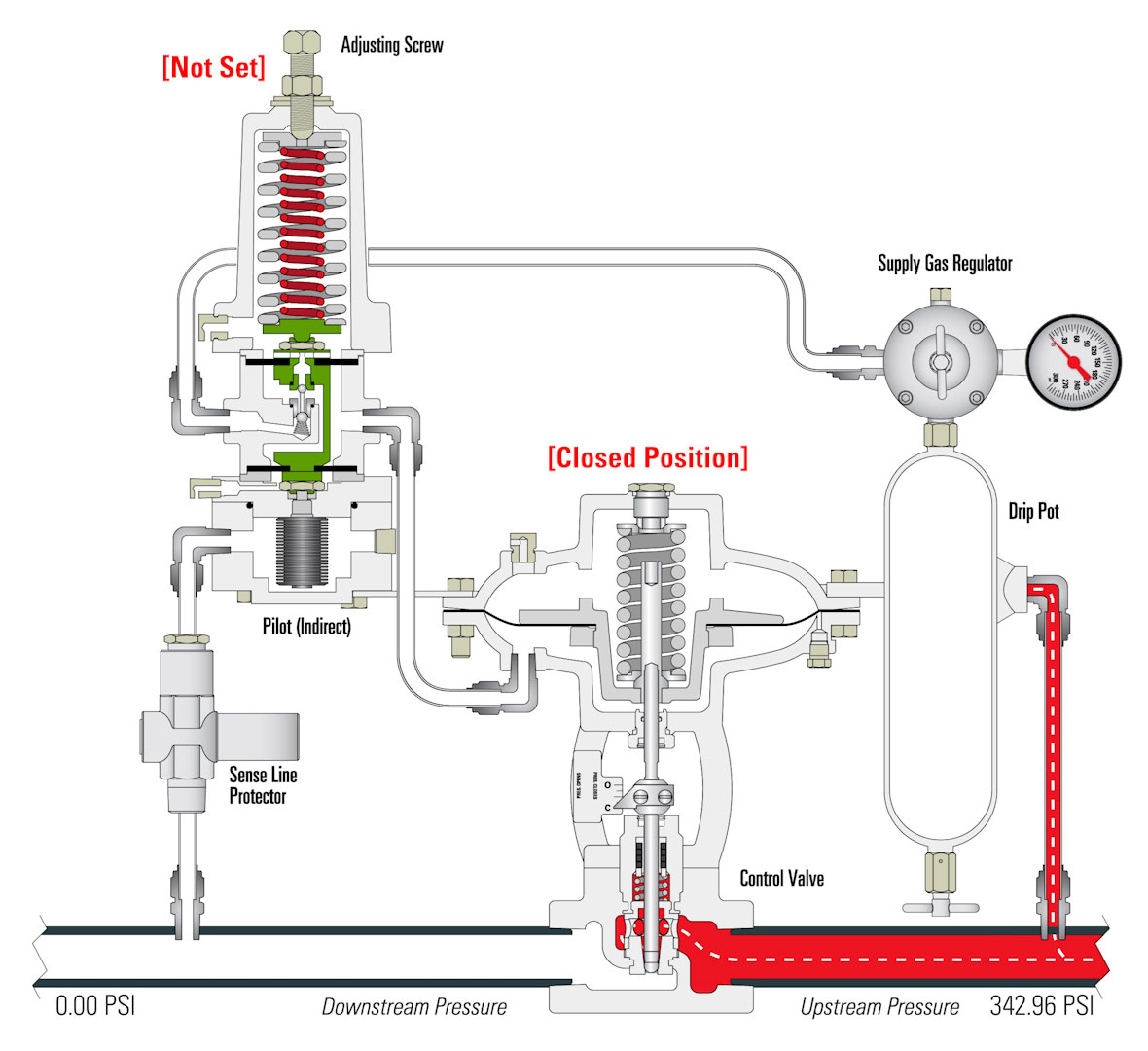
- No supply pressure is available yet to move the valve open at this time.
- Upstream pressure flows into the Drip Pot which knocks out liquid from the supply gas which could be detrimental to other instruments.

- The supply gas regulator reduces the upstream pressure to 30 PSI to provide supply pressure to the pilot.
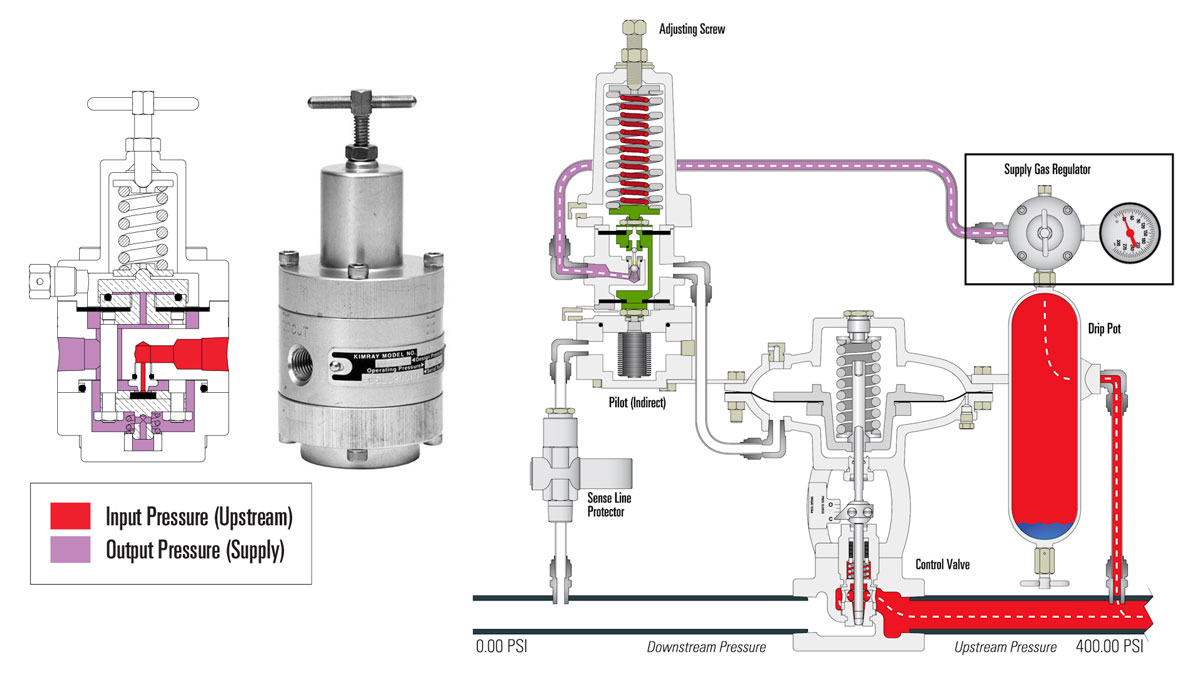
- This supply pressure moves into the pilot where the flow is blocked by the pilot plug.
- When the adjustment screw is unthreaded, there is no downward pressure on the pilot diaphragm assembly. Once the adjusting screw is threaded, the spring puts pressure on the assembly which positions the pilot plug to open the flow of supply pressure into the control valve actuator.
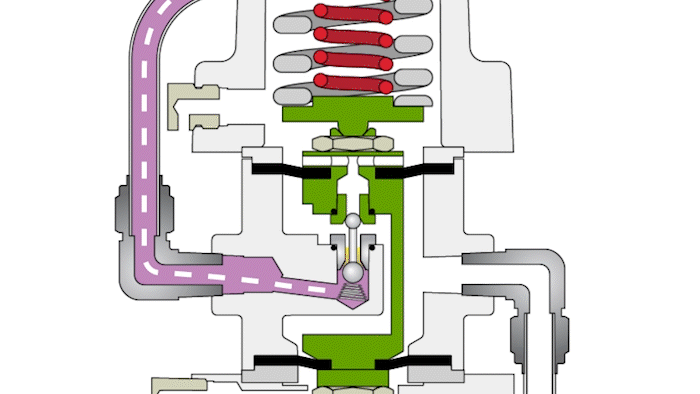
- This supply pressure pushes up on the control valve diaphragm working against the tension of the spring. This opens the valve and allows upstream pressure to move downstream.

- Next, downstream gas moves through the sense line protector. This device protects the pilot from over pressurization. It blocks the downstream pressure when it exceeds the adjustable limit and reopens when inlet pressure drops below the limit.
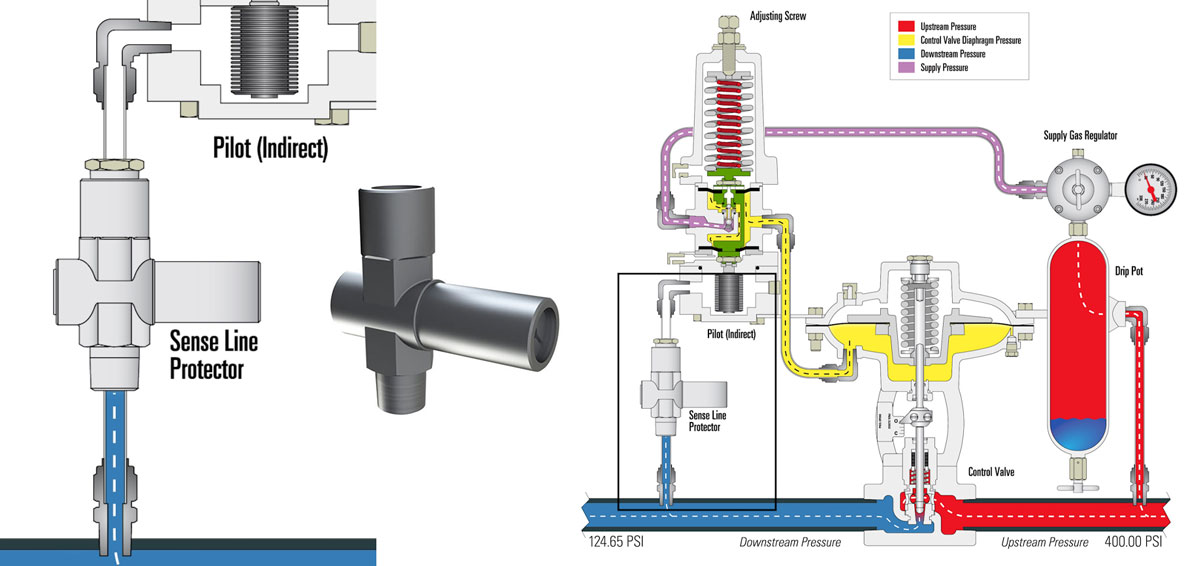
- The downstream pressure in the pilot tells the valve what to do next. With the set point at 150 PSI, this pilot will keep the valve open until 150 PSI is reached.
- As the sense pressure approaches the set point, it causes the bellows to contract, actuating the bellows stem to move it upward against the diaphragm assembly.
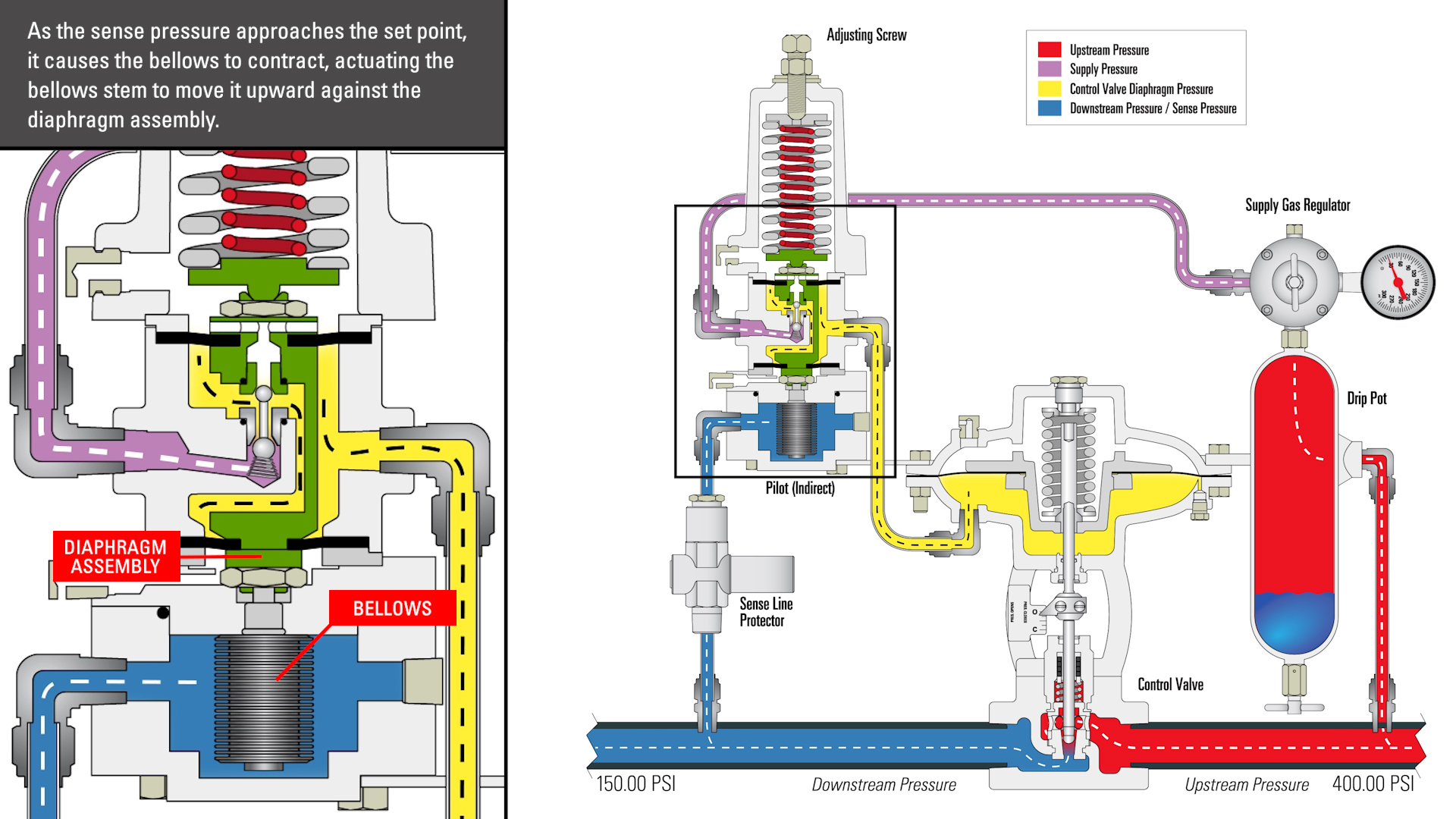
- This compresses the pilot spring and closes off the flow of supply pressure to the control valve actuator. This also unseats the top of the pilot plug which allows the pressure to vent. This allows the control valve to travel to its fail position, which in this case is closed.
- Once pressure has vented, and there is no longer enough pressure to overcome the pilot spring, the pilot diaphragm assembly will move back down.
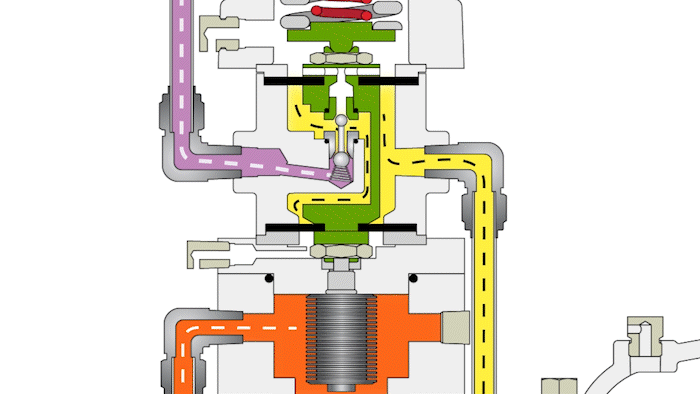
- This will seat the top of the pilot plug and unseat the bottom, allowing supply pressure back into the control valve actuator.
The rapid but stable repositioning of the pilot plug produces a throttling action, and the valve will open and closed by only a small percentage to maintain the set point.
As this cycle repeats, liquids continue to fall out of the supply gas into the drip pot where it will need to be drained regularly, depending on the conditions.








































